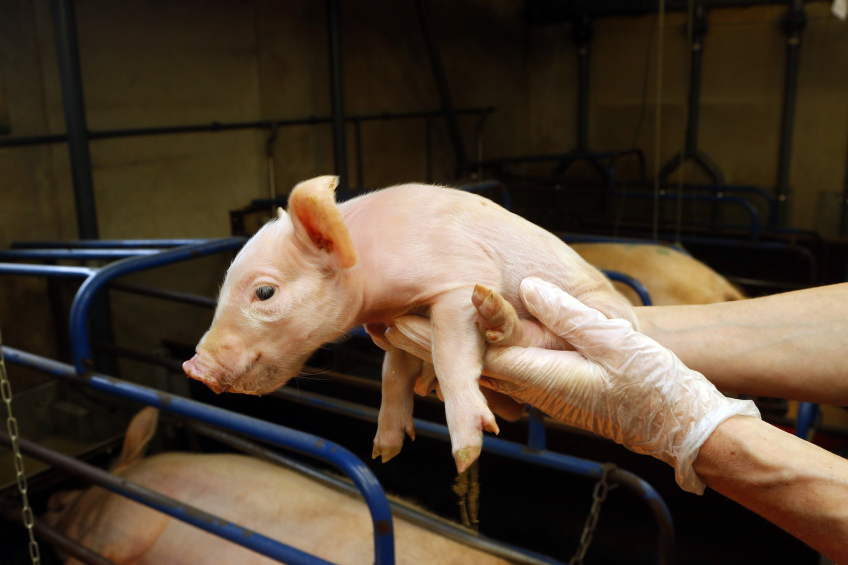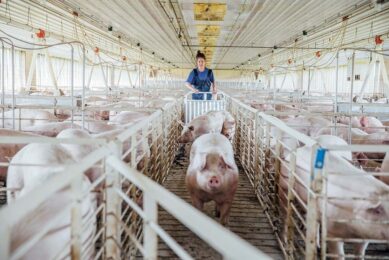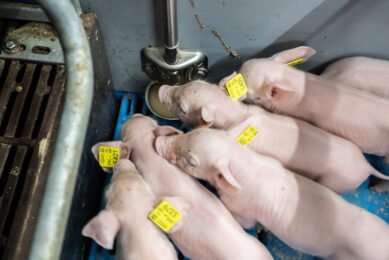Congenital tremor in piglets due to pestivirus

After decades of speculation, congenital tremor in neonatal piglets has been confirmed to be caused by a virus. Researchers from both the United States and the Netherlands recently identified a new type of porcine pestivirus.
Congenital tremor is the phenomenon of ‘dancing pigs’. It is best described as newborn piglets showing muscular tremor, ataxia and inability to stand and suck. Typically, the trembling only occurs when the piglets are awake, as those affected with congenital tremor don’t tremble while sleeping. Often, congenital tremor coincides with splayleg. Piglets may succumb due to the inability to stand or suck, but those piglets that survive, usually recover as clinical signs disappear over time.
Depending on the exact cause, clinical signs and mortality differ. In veterinary science, 2 major types of congenital tremor can be distinguished:
- those with changes in the brain or spinal cord (type A) and
- those where no visible changes can be spotted (type B).
Scientists subdivide type A again in 5 different subgroups, ranging to different causes, from toxicity to infectious disease or inheritance. Until recently, type A-II was the most mysterious of all. Scientists strongly suspected a transmissible viral cause, and a link with Porcine Circovirus 2 was suspected. Still the exact virus remained unidentified – until now.
Two research teams, independently but simultaneously working on comparable studies, in the United States and the Netherlands, reported a similar breakthrough. Both presentations were given at the International Pig Veterinary Society (IPVS) Congress, in Dublin, Ireland, in June 2016.
Iowa State University research
In late 2015, the team from Iowa State University, in Ames, IA, United States, already communicated briefly about the pestivirus they had discovered and associated with congenital tremors. As Paulo Arruda explained on behalf of the US research team, they discovered the pestivirus from field cases with congenital tremors and identified it as being closely related to a Chinese bat pestivirus. In an attempt to reproduce the disease, they inoculated piglets in utero at both 45 and 62 days of gestation. These piglets indeed were affected with congenital tremors, at prevalence ranging from 57 to 100%.
Research in the Netherlands
Initial research in the Netherlands into the virus was already started up as early as 2012 – the team including researchers from the University of Amsterdam, Utrecht University and MSD Animal Health needed time to collect all relevant data and prove their findings.
Not only did this research team manage to replicate the disease, Dr Ad de Groof from MSD Animal Health explained at IPVS, the Dutch also demonstrated that the virus can transmit transplacentally, as in their research, several sows were inoculated with the virus at day 32 of gestation.
“In two of the three litters born from these gilts, several piglets presented mild to moderate clinical signs of congenital tremor type A-II,” they wrote. The Dutch team have suggested a name for the new virus: congenital tremor associated porcine pestivirus (CT-APPv).
Join 18,000+ subscribers
Subscribe to our newsletter to stay updated about all the need-to-know content in the pigsector, three times a week. Beheer
Beheer










 WP Admin
WP Admin  Bewerk bericht
Bewerk bericht